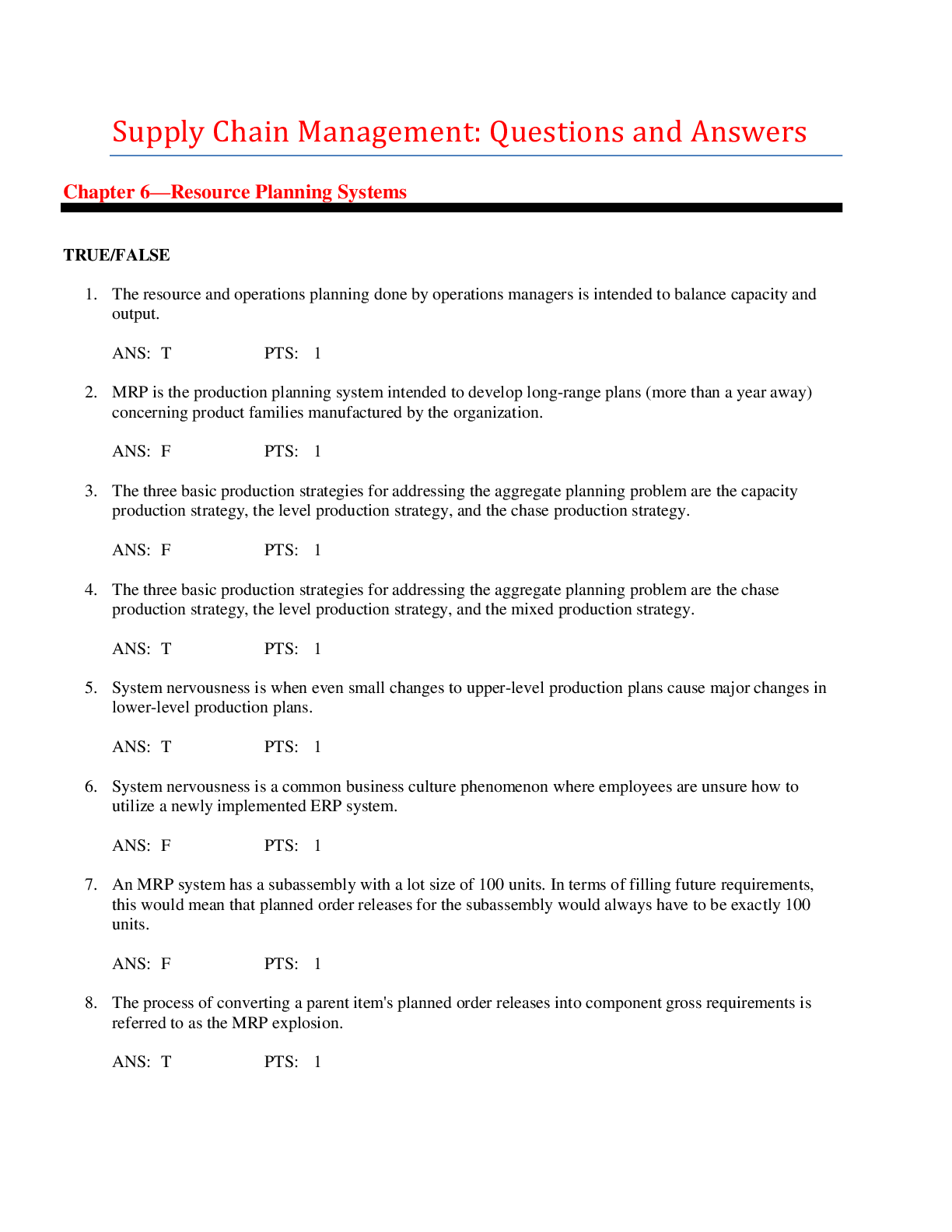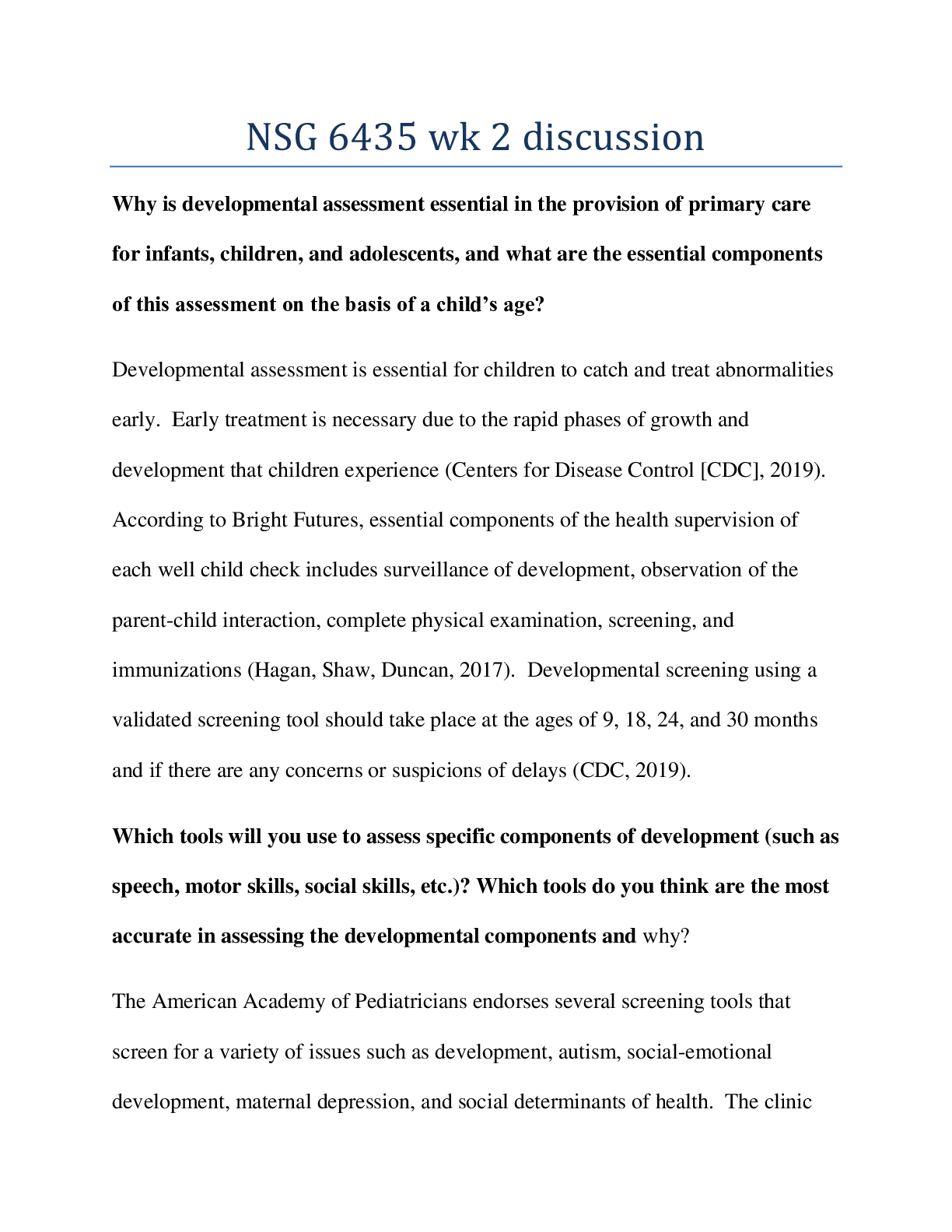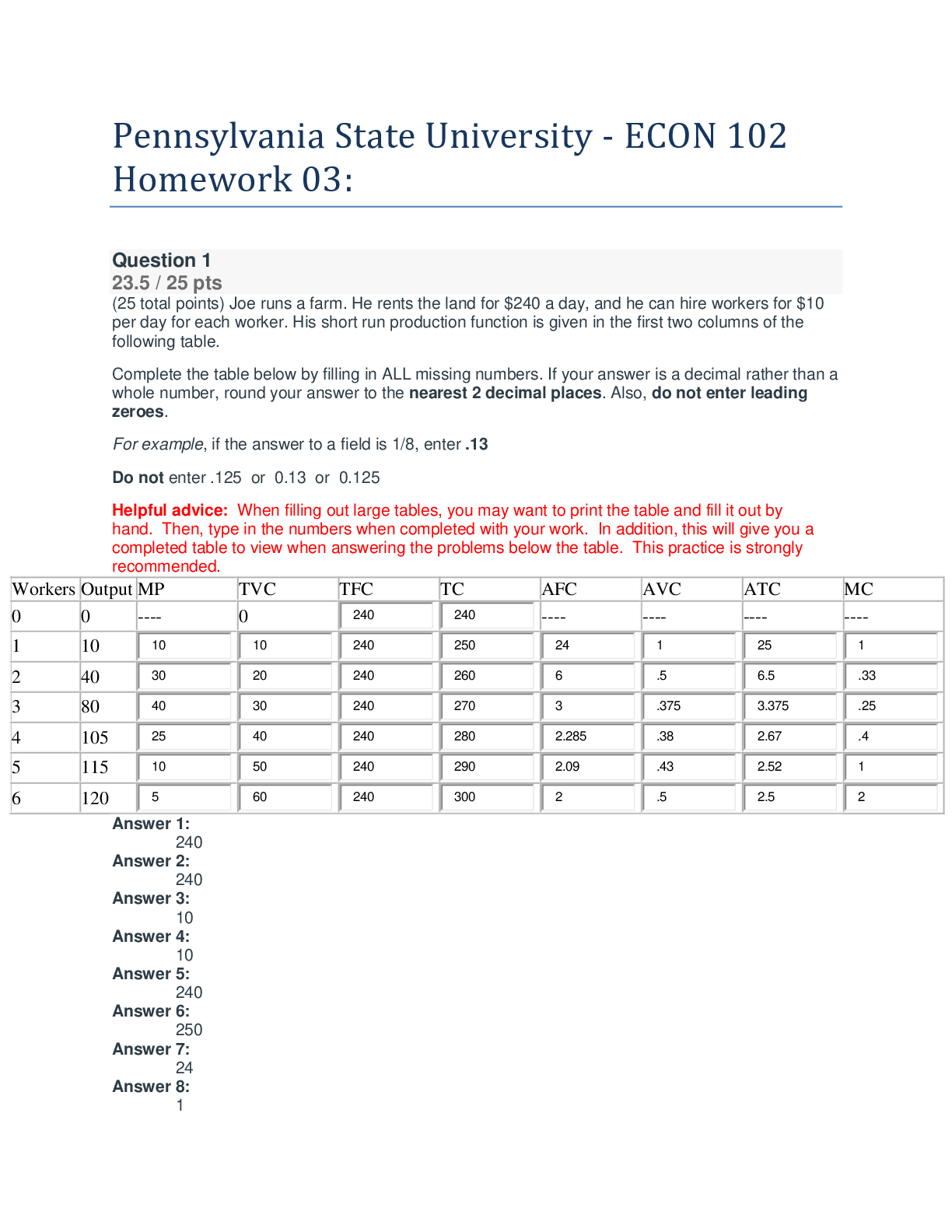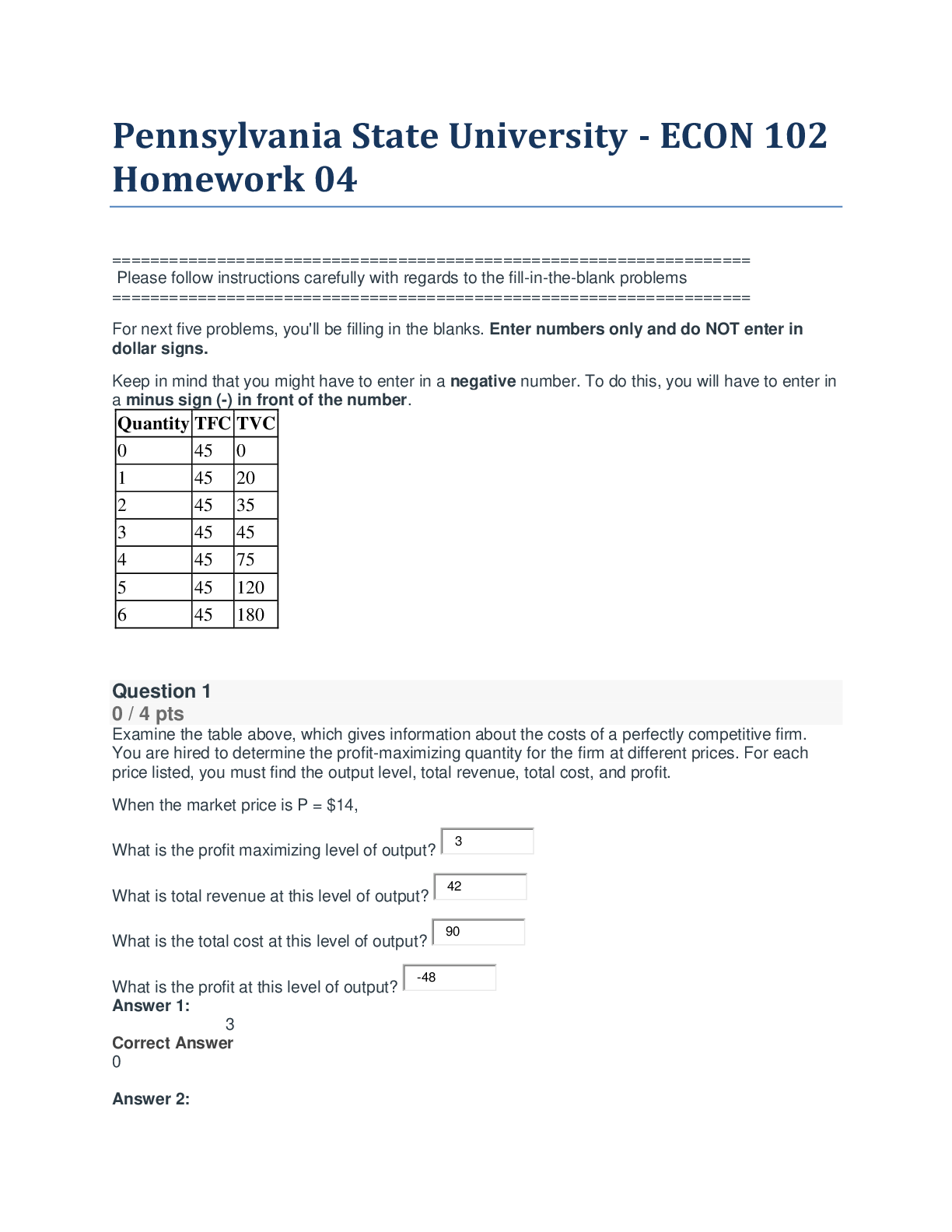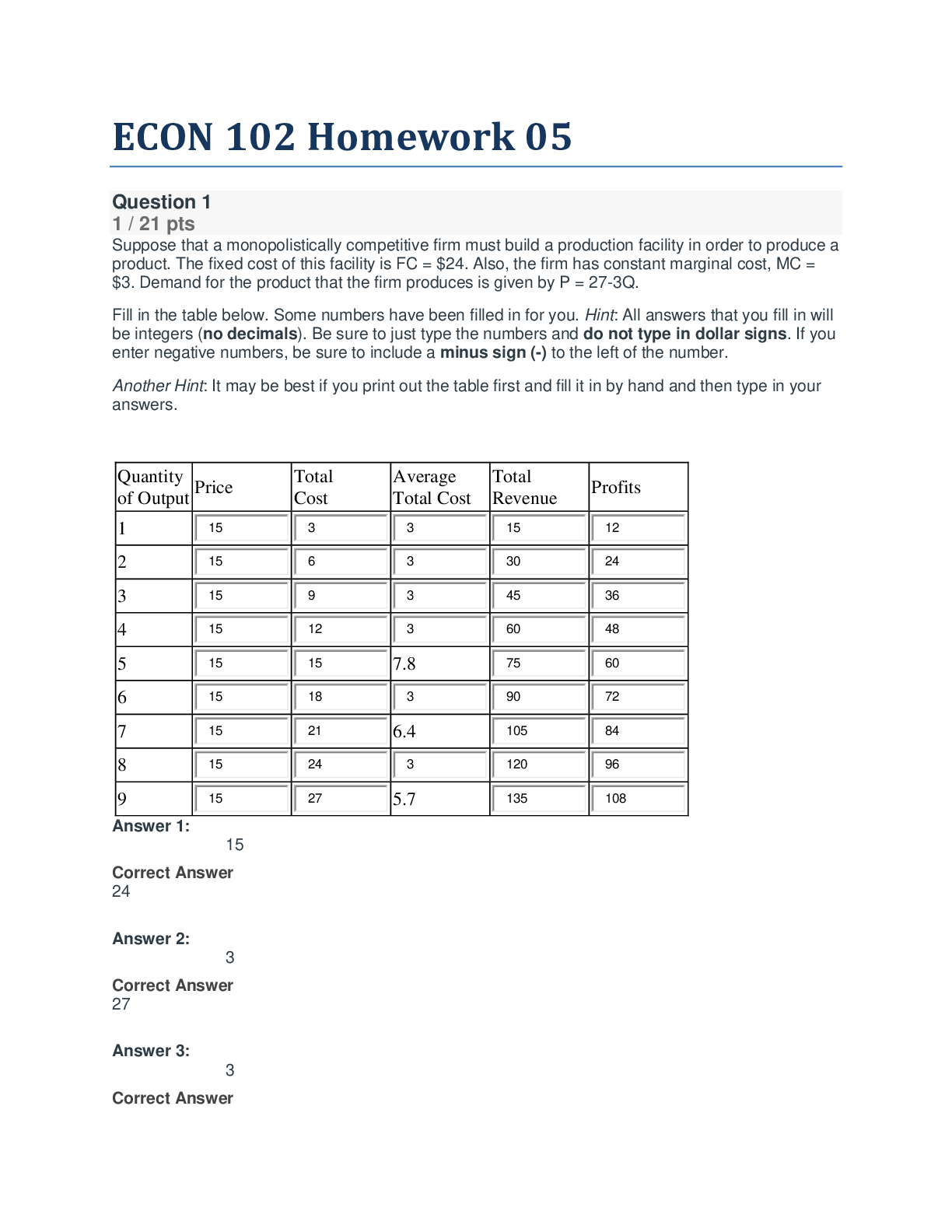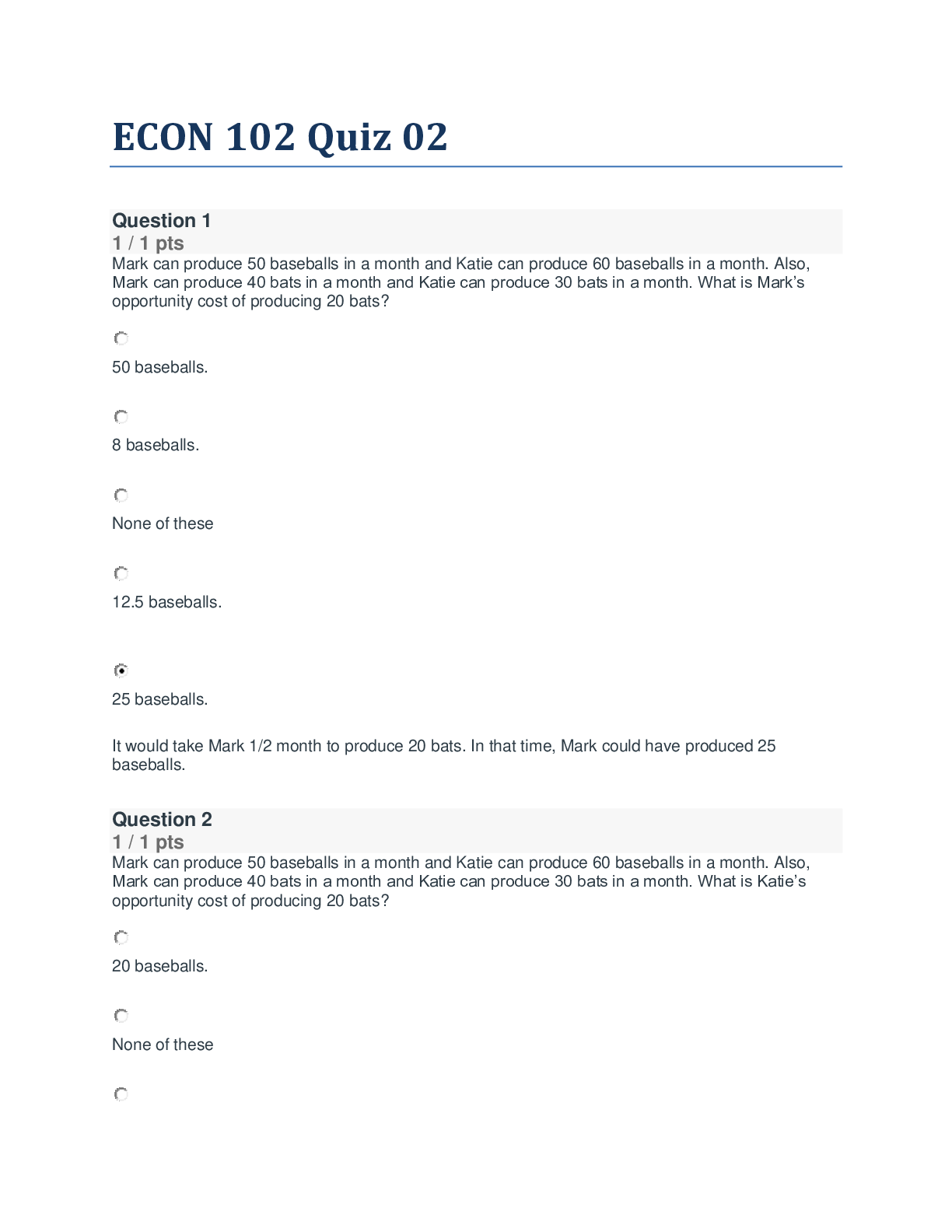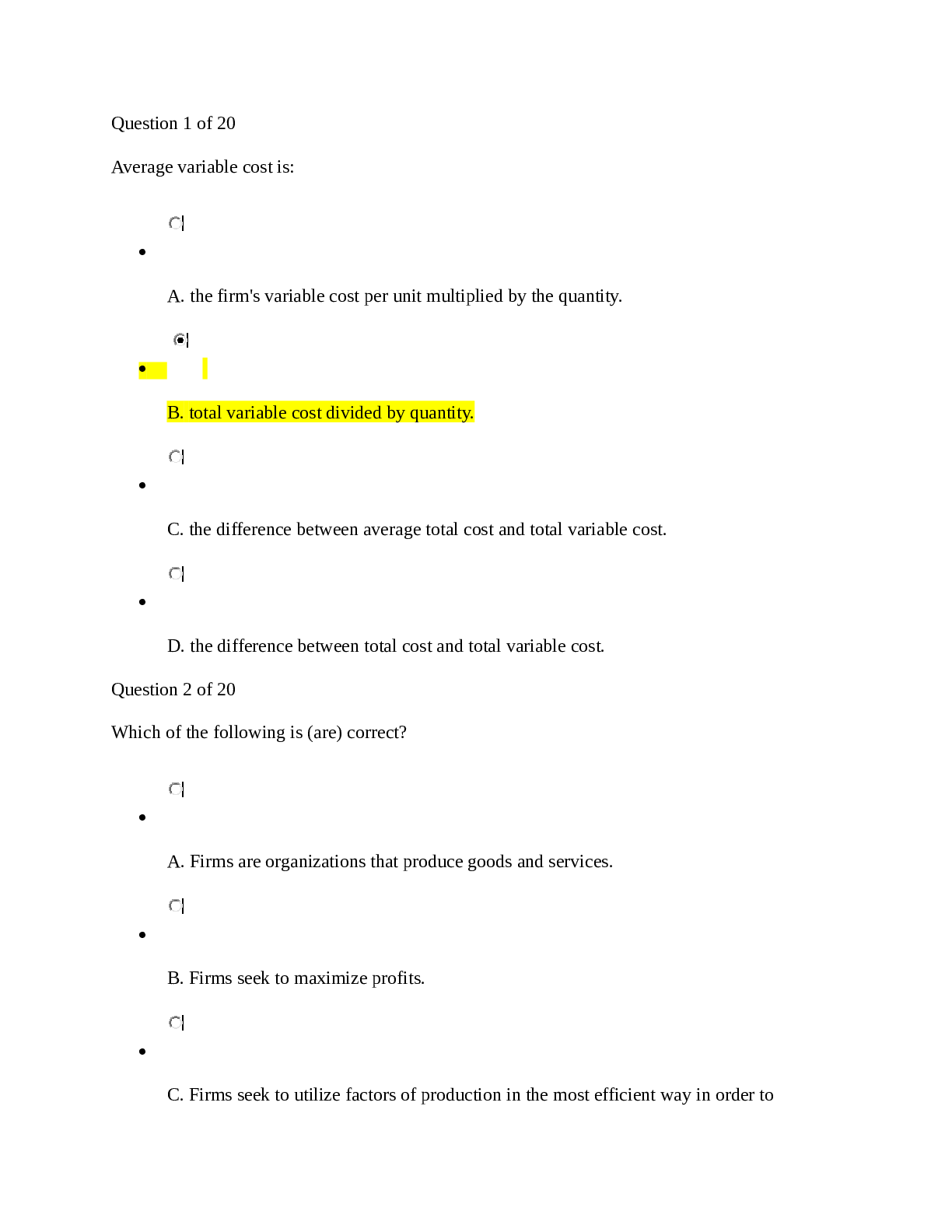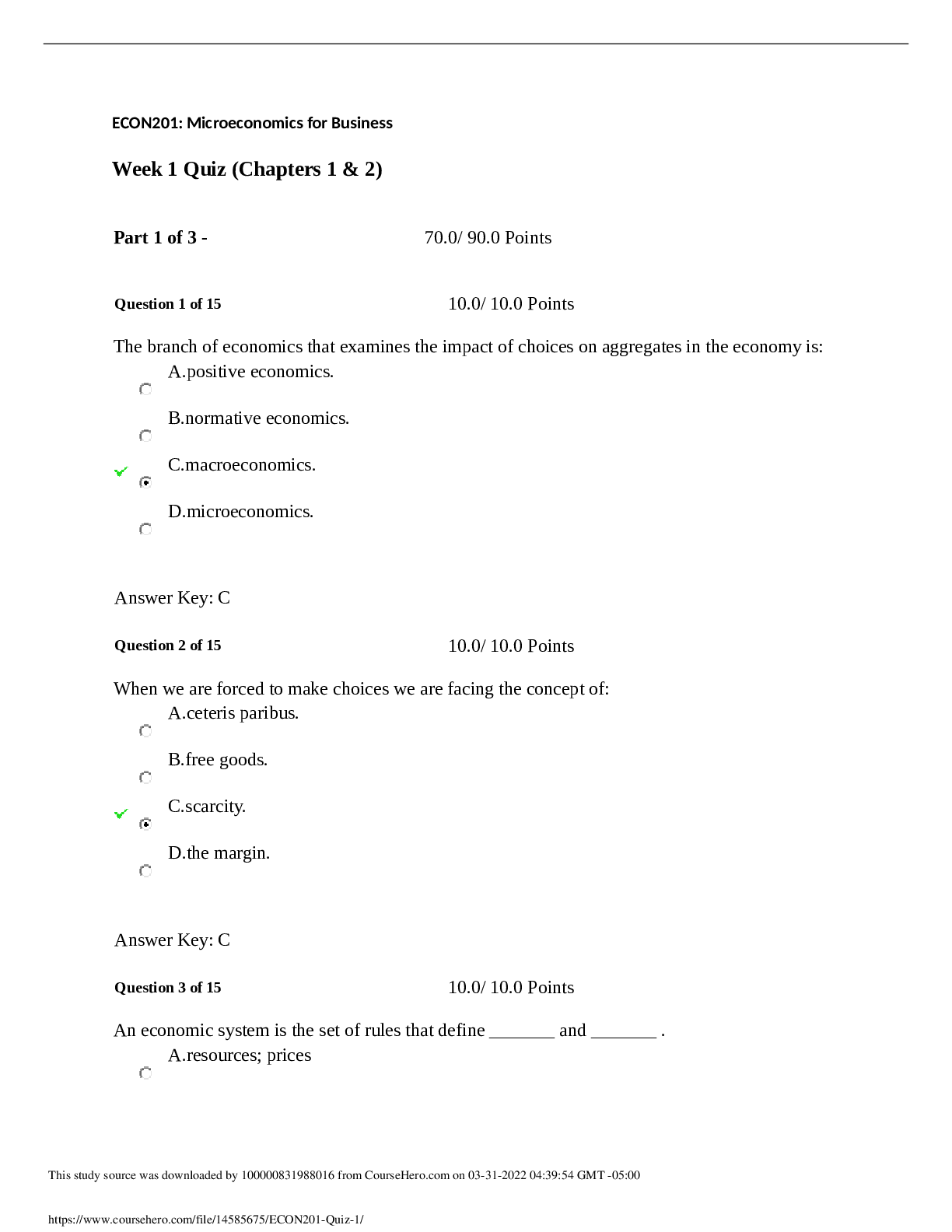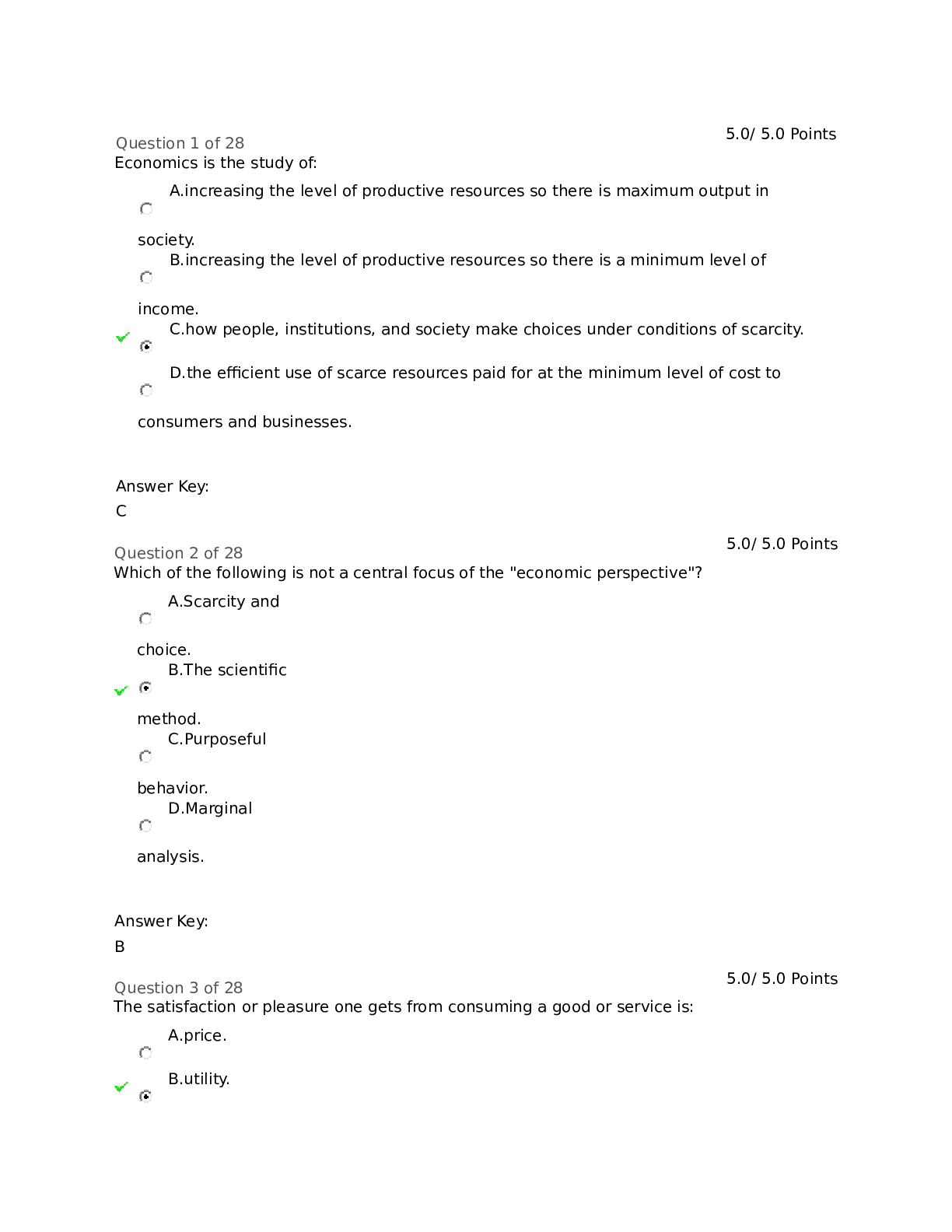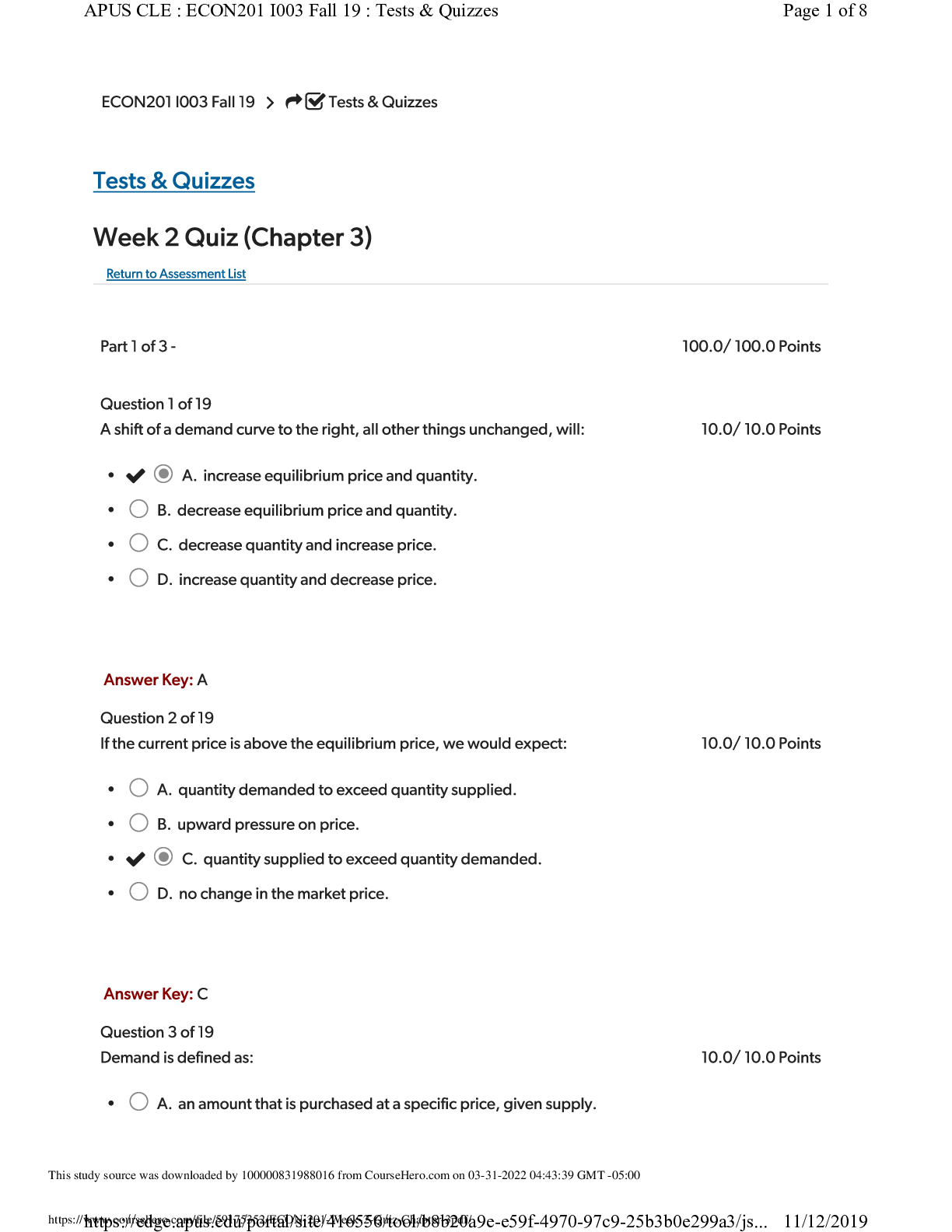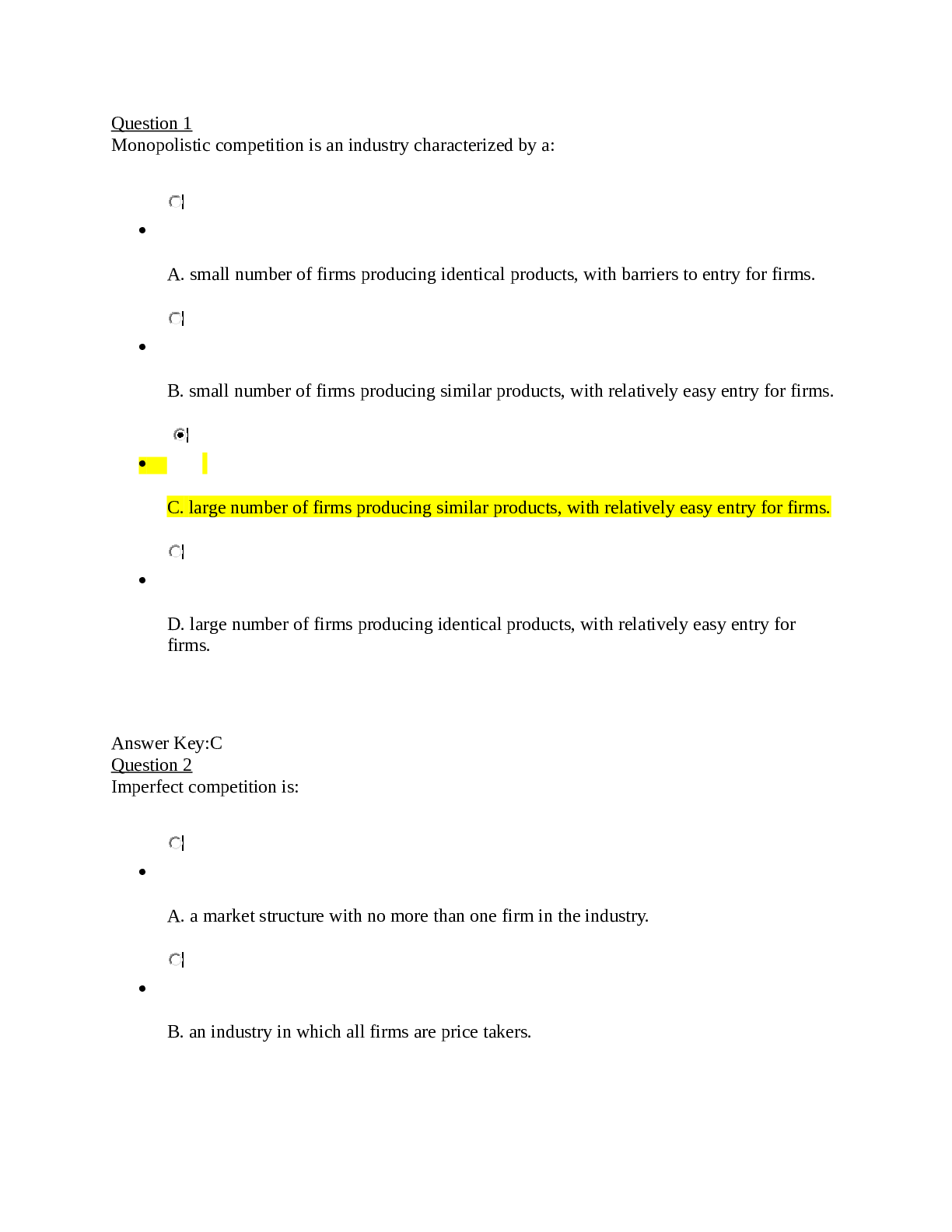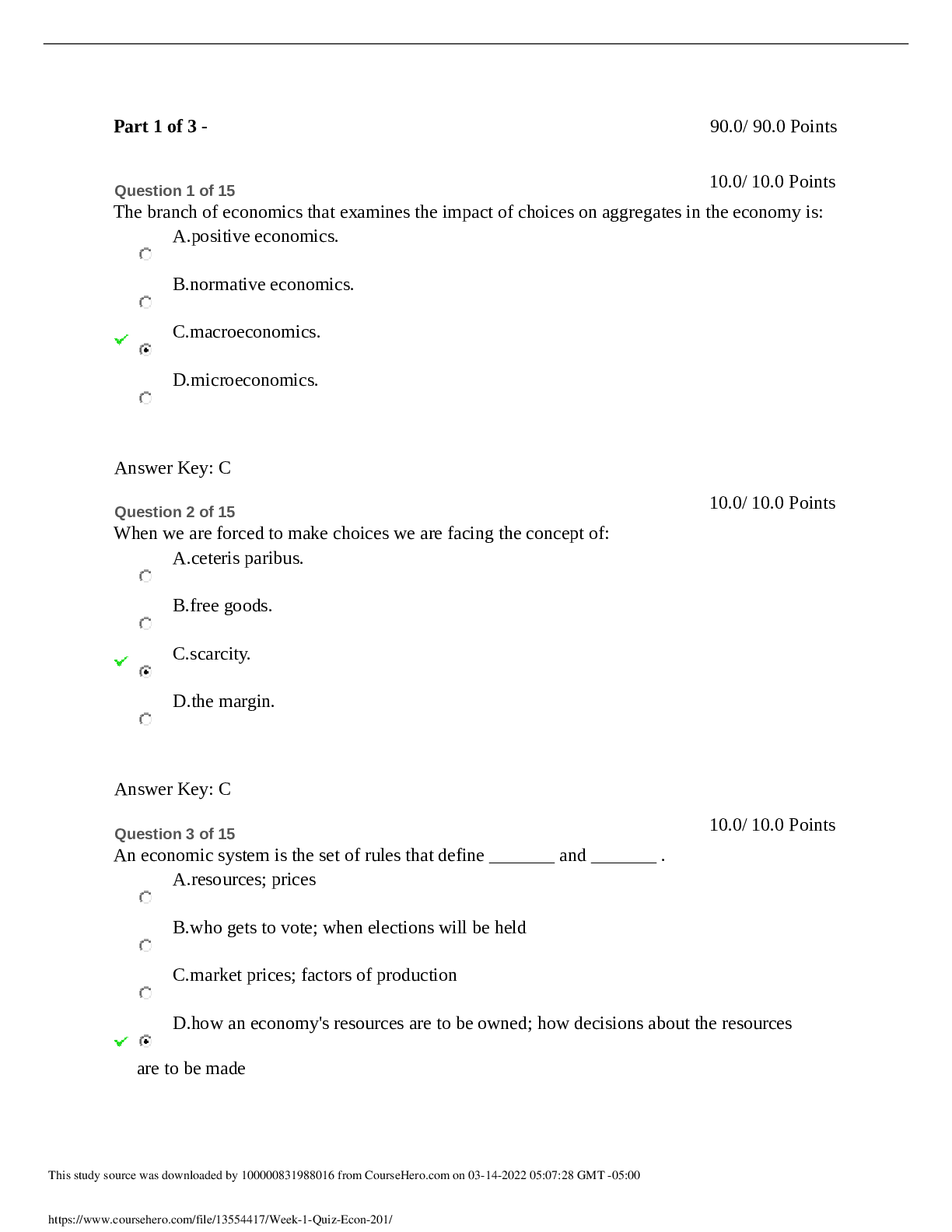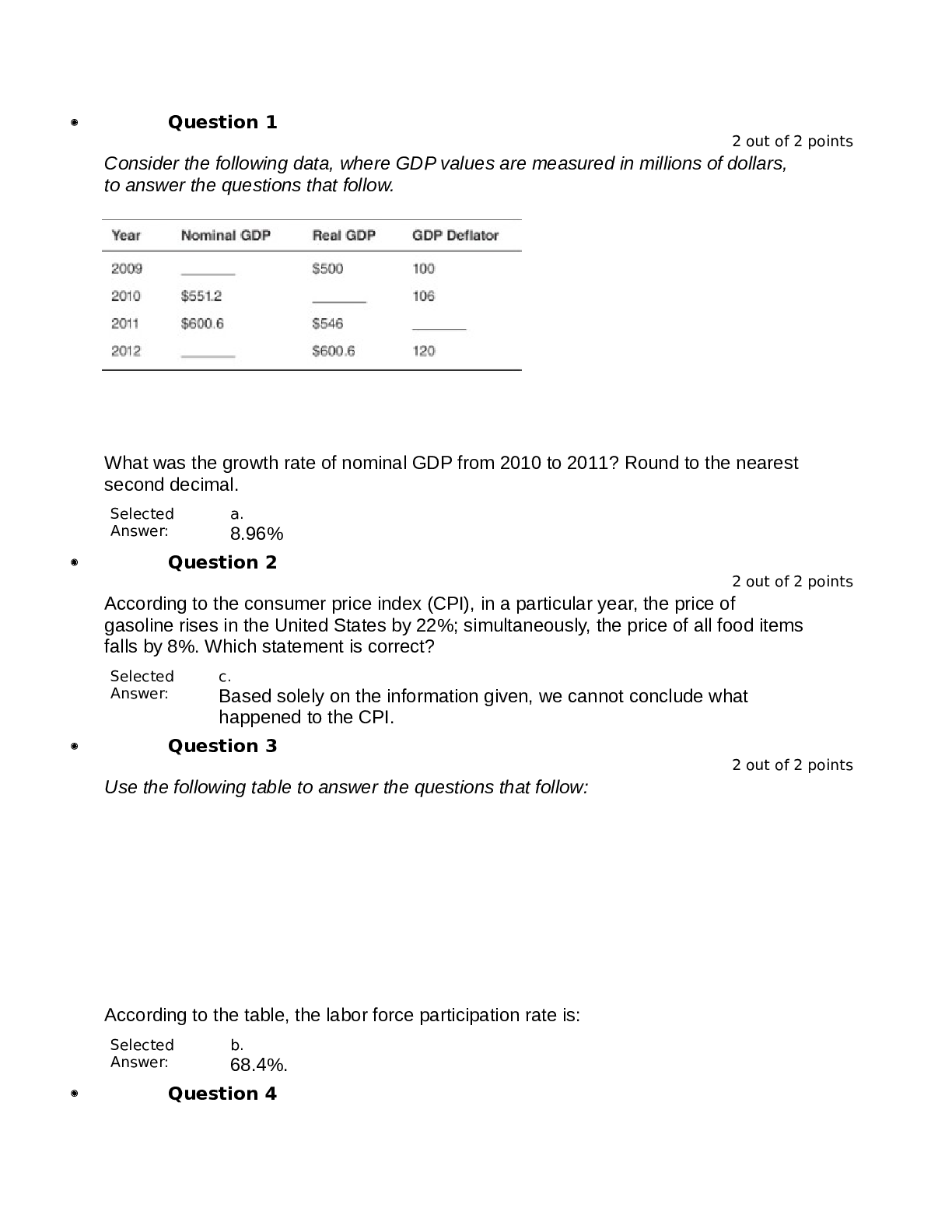Economics > QUESTIONS & ANSWERS > Pennsylvania State University - ECON 102Midterm Exam 2 P1. This Quiz Scored 33/60 (Check inside for (All)
Pennsylvania State University - ECON 102Midterm Exam 2 P1. This Quiz Scored 33/60 (Check inside for the helpful parts)
Document Content and Description Below
ECON 102 Midterm Exam 2 P1 Question 1 3 / 3 pts Elaine is a successful lawyer who decides to quit her law practice and do what she loves. She opens a bread bakery using $20,000 from her savings ... account. Which of the following is an explicit cost of her new bakery business? the income Elaine could earn if she rented her baking ovens to another bakery. the forgone interest income on the $20,000 used to open the bakery. the wages Elaine pays to her employees. the wages Elaine could have earned as a lawyer. An explicit cost requires a monetary outlay. IncorrectQuestion 2 0 / 3 pts Which of the graphs above show the law of diminishing marginal productivity? (a) (b) (c) (d) all of them Remember the slope of the production function is marginal product and the slope of the total cost curve is marginal cost. When marginal product declines, marginal cost is rising. Question 3 3 / 3 pts The cost of producing one extra unit of output is marginal product marginal cost average total cost average variable cost Marginal cost is the extra cost associated with producing one more unit of output. Question 4 3 / 3 pts Labor Marginal Product 0 1 8 2 10 3 13 4 12 5 8 6 7 7 4 8 3 Dexter’s Dog treats bakery makes dog biscuits in designer flavors. Dexter pays each of his workers the same wage and labor is his only variable cost of production. Production information for Dexter’s firm is shown in the table above. From this information we know that Dexter’s average variable cost decreases as output increases from 0 to 12, but increases after that. as output increases from 0 to 43, but increases after that. as output increases from 0 to 51, but increases after that. over all output levels. Recall that AVC = VC/Q. Since labor is the only variable cost, VC = wage * number of laborers. IncorrectQuestion 5 0 / 3 pts Economies of scale can result from management problems that occur at high output levels. increased specialization increases in long run average total cost at high output levels increases in long run average total cost at low output levels. Firms can capitalize on economies of scale by allowing workers to specialize in specific tasks. This tends to increase productivity and reduce costs. IncorrectQuestion 6 0 / 3 pts The marginal cost of a worker in a competitive labor market is equal to the marginal revenue product of that worker the wage rate the marginal product of that worker the price of the final output produced by that worker The additional cost incurred from hiring one more worker is equal to the wage rate. Question 7 3 / 3 pts Consider the table above. How much does the 4th worker contribute to the firm’s revenue? $18 $40 $50 $30 The fourth worker contributes $3*10= $30 to the firm’s total revenue. Question 8 3 / 3 pts Norman has an upward sloping labor supply curve. If the opportunity cost of leisure rises for Norman, he will work more less the same amount more information is needed to answer the question When an individual has an upward sloping supply curve, they will work more as the wage rises. IncorrectQuestion 9 0 / 3 pts A firm will rent land provided that the marginal revenue product of the land is greater or equal to the rental price of the land less than or equal to the rental price of the land equal to the wage equal to the rental price of capital A firm will continue hiring more land if the MRP of land is greater than or equal to the rental price of that land. Question 10 3 / 3 pts Your bagel shop uses both capital and labor in the production of bagels. In this production process capital and labor are substitutes. If you install a new oven and the marginal product of capital increases, you will reduce the number of workers you employ increase the number of workers you employ reduce the amount of capital you are using not make any changes since you are already maximizing profit Since K and L are substitutes you will employ more capital and less labor. IncorrectQuestion 11 0 / 3 pts In the above figure, the demand curve depicted on which graph represents the market demand curve in a perfectly competitive industry. Graph 1 Graph 2 Graph 3 Graph 4 Graph 1 depicts a downward sloping demand curve, as in a perfectly competitive industry. Question 12 3 / 3 pts Which of the following is always true for a perfectly competitive firm that is maximizing profits? MR=MC=P* MR=ATC=P* MR=MC=ATC MR=AVC=P* If a perfectly competitive firm is profit maximizing, then we have MR=MC. We always have MR=P* if the firm is perfectly competitive. Question 13 3 / 3 pts In the above figure, the left hand side graph represents a perfectly competitive industry and the right hand side graph represents a perfectly competitive firm. As the demand curve decreases from D1 to D0, the firm's output decreases from 9 to 8. the firm's output increases from 9 to 11. the firm's output decreases from 11 to 9. the firm's output increases from 8 to 9. The firm's short run supply curve is its MC curve, so as price decreases from 5 to 4, the firm decreases output from 9 to 8. IncorrectQuestion 14 0 / 3 pts Why do perfectly competitive firms in the long run always make zero economic profit? There are no barriers to entry or exit in perfectly competitive industries. Perfectly competitive firms produce homogeneous products. There are many firms in a perfectly competitive market. Perfectly competitive firms are price takers. Because there are no barriers to entry or exit in perfectly competitive markets. When firms are making positive economic profit, entry will occur and firms' profit level will decrease. Similarly, when firms are making negative economic profit, exit will occur and remaining firms' profit level will increase. Therefore, perfectly competitive firms will always make negative economic profit in the long run. Question 15 3 / 3 pts To society, the opportunity cost of producing one more bushel of wheat is the marginal cost of the bushel of wheat. the average cost of the bushel of wheat. the total cost of all of the bushels of wheat. the average variable cost of the bushel of wheat. The extra cost of the extra bushel of wheat is its marginal cost. Question 16 3 / 3 pts A monopolist faces a demand curve given by: P = 105 – 3Q, where P is the price of the good and Q is the quantity demanded. The marginal cost of production is constant and is equal to $15. There are no fixed costs of production. What price should the monopolist charge in order to maximize profit? $15. $30. $45. $60. None of these. The monopolist should produce the quantity where Marginal Revenue equals Marginal Cost, and charge the highest price allowed by the demand curve at that quantity. IncorrectQuestion 17 0 / 3 pts A natural monopoly refers to a firm with sole ownership of a natural resource. an industry with large economies of scale. an industry with increasing long run average cost. a firm with a patent on the production of a good None of these. Definition of natural monopoly. IncorrectQuestion 18 0 / 3 pts Suppose a monopolist faces the following demand curve: What is the marginal revenue of the 5th unit of output? Price Quantity $90 0 $80 1 $70 2 $60 3 $50 4 $40 5 $30 6 $20 7 $-10 $0 $40 $50 None of these. Total revenue from selling 4 units is $200. Total revenue from selling 5 units is $200. The marginal revenue is the additional revenue earned when a firm produces and sells an extra unit of a good. IncorrectQuestion 19 0 / 3 pts Suppose the price elasticity of demand for a monopolist is -4. If price equals $40, then marginal revenue equals $10 $20 $30 $40 None of these. MR = P*(1 + 1/price elasticity of demand). Question 20 3 / 3 pts Which of the following is the best example of price discrimination? Selling hot dogs at a football game for a different price than outside of the football game. Selling concert tickets close to the stage for a higher price than those farther away from the stage. Selling movie tickets to students at a lower price than those sold to non-students. Selling baseball tickets for a different price than football tickets. Definition of price discrimination. Quiz Score: 33 out of 60 [Show More]
Last updated: 1 year ago
Preview 1 out of 12 pages
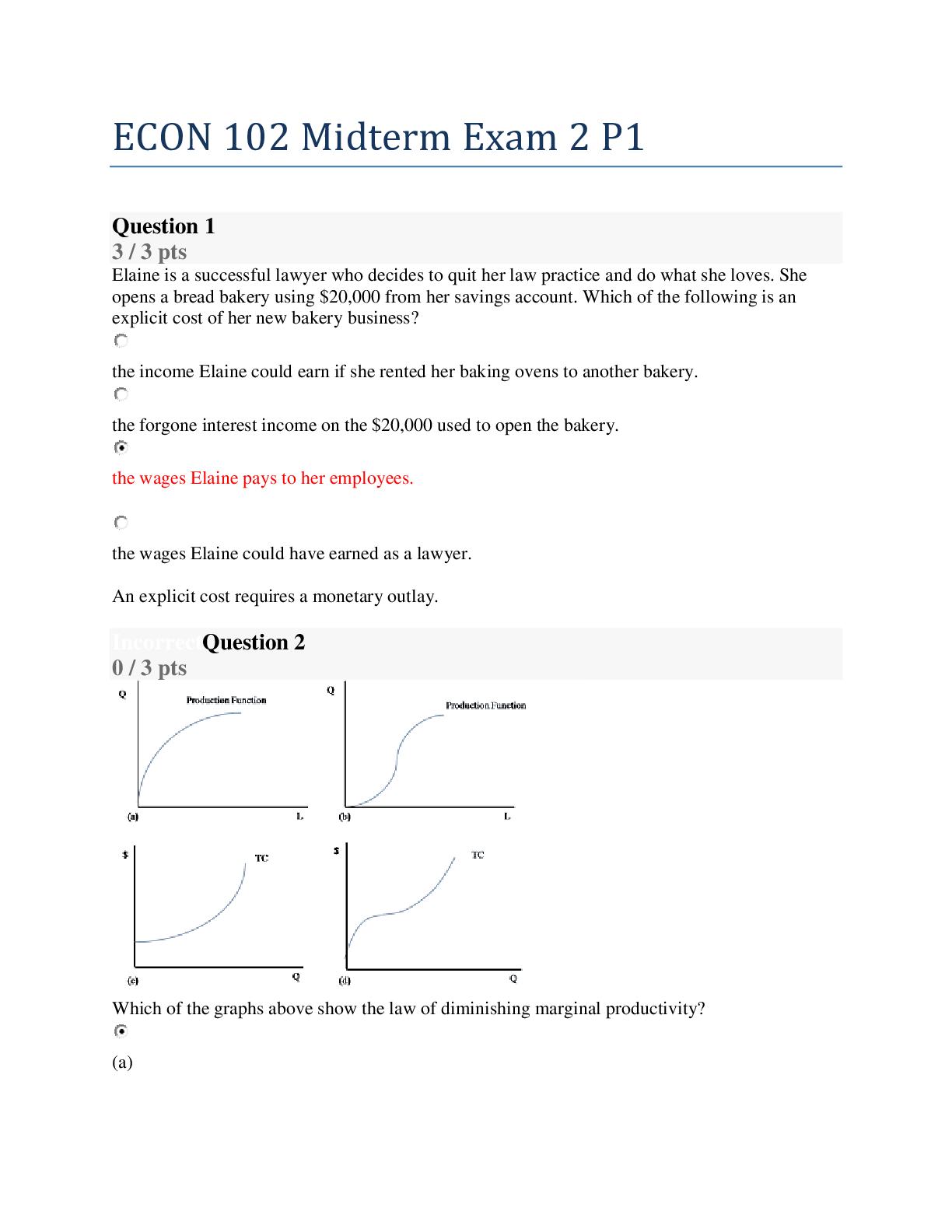
Reviews( 0 )
Document information
Connected school, study & course
About the document
Uploaded On
Oct 04, 2020
Number of pages
12
Written in
Additional information
This document has been written for:
Uploaded
Oct 04, 2020
Downloads
0
Views
53





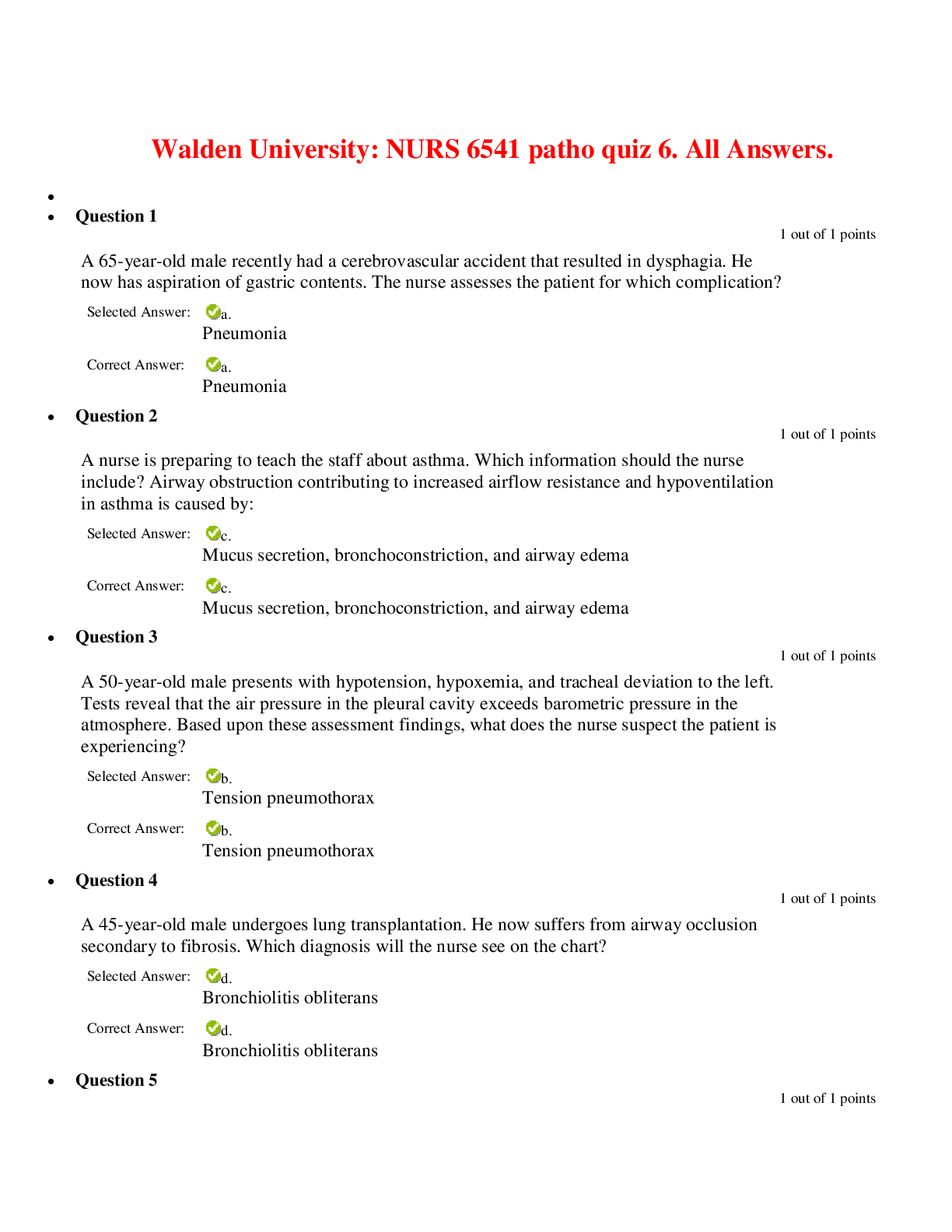





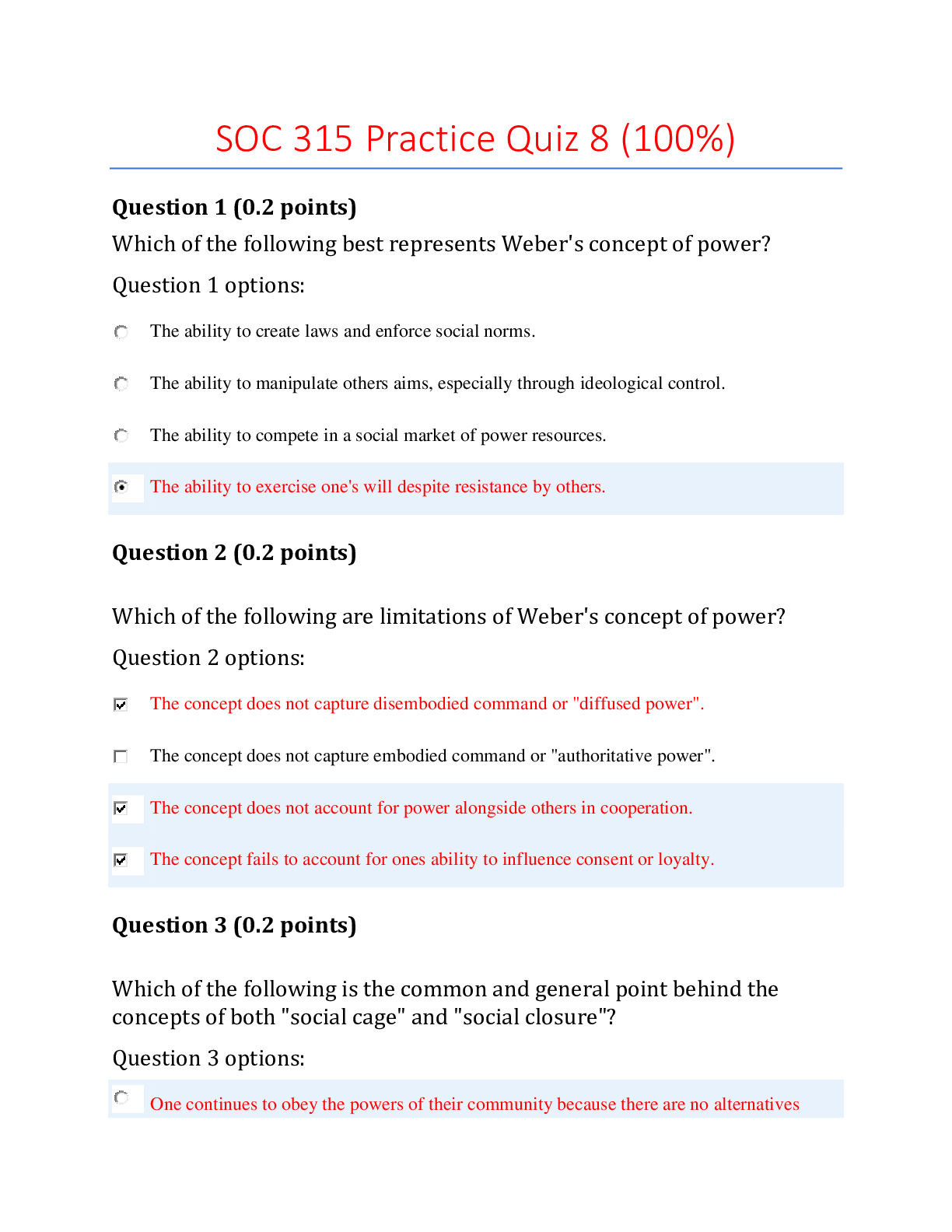
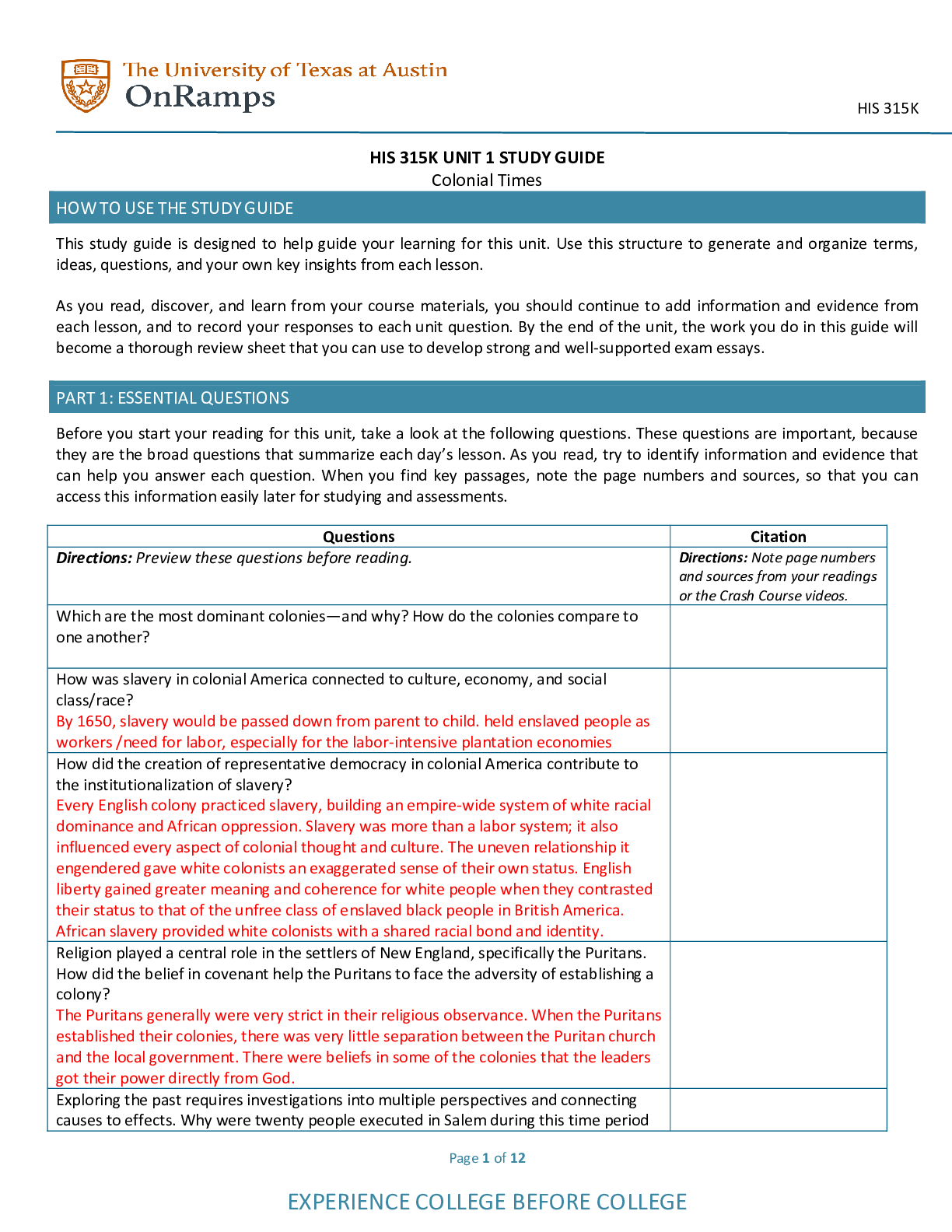
.png)

